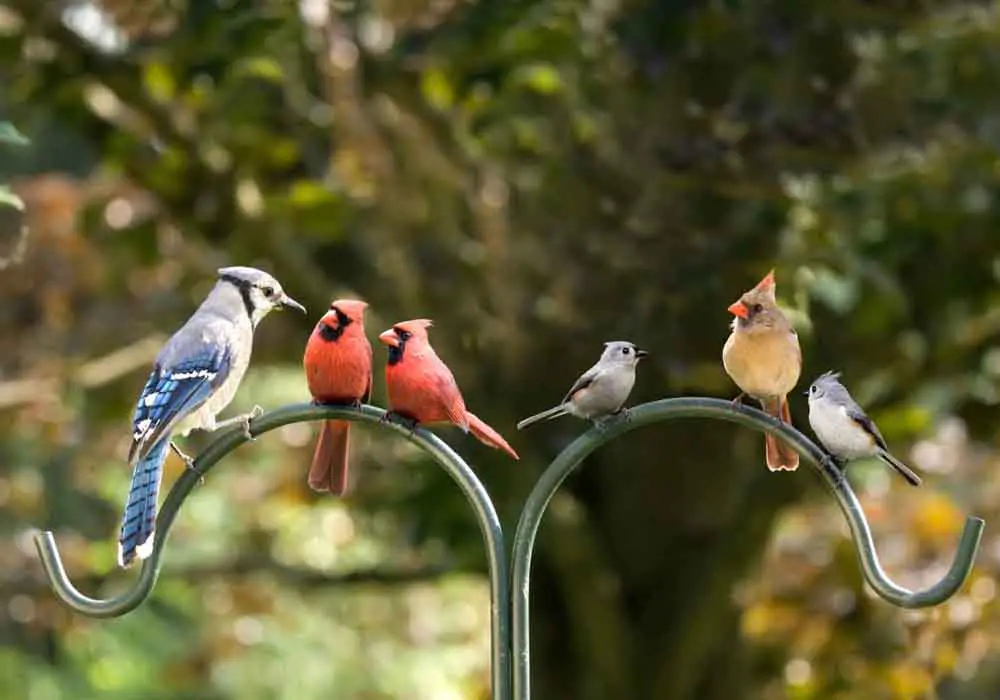How Do Birds Talk?
How And Why They Communicate
Many of us marvel at birds' flights and their vibrant
colors but stand in sheer wonderment when they start to "talk".
Emulating the human voice, some bird species manage to articulate certain
phrases to a startling degree. And it gives rise to an essential question, 'how
do birds talk?'
Before we delve into the mechanics of bird 'speech', it’s
important to point out some underlying factors that significantly affect birds'
communication strategies. These preconditions set the stage for understanding
the world in which bird communication exists.

Firstly, bird communication isn't stagnant; it
drastically changes with seasons. During the breeding season, many birds
produce intricate, beautiful songs as a way of attracting a mate or defending
their territories. For other times of the year, their vocalizations may be
limited to simple calls or alarms.
There's another compelling theme that underlies bird communication- survival. Birds use their 'language' to send out signals to their flock when a predator is near, indicating the kind of threat, and sometimes even the degree of urgency. In these instances, bird 'talk' becomes crucial for their survival.
Finally, the specific circumstances within which a bird
grows up and lives have a significant impact on their 'speech'. A bird may
learn its tunes from its immediate community, developing a local 'dialect'.
Distinct environmental sounds can also be mimicked, adding to the complexity of
their vocal repertoire.
What Makes A Bird Able To Talk?
So, how do birds talk? The key to a bird's ability to "speak" lies within its syrinx, a unique vocal organ, situated at the junction of bronchi (air tubes) where they enter the lungs. This remarkable structure enables birds to produce a vast range of sounds, including mimicking human speech.
Unlike humans who produce sounds by letting air pass through our vocal cords in the larynx, birds utilize this specialized organ. It's here they can manipulate the pitch, volume, and quality of their sounds by changing the tension and position of the numerous muscles that surround it.
In the case of 'talking' birds such as parrots, mynahs,
or songbirds like starlings, they are blessed with an aptly developed neural
circuitry that enables them to imitate sounds around them, including human
speech. This combination of physical abilities, listening skills, and complex
neural networking primes certain bird species for 'talking'.
Do Birds Understand What They Say?
Knowing how a bird can reproduce human speech leads to another fascinating question: Do birds understand what they say? In the grand scheme of bird communication, most bird 'languages' serve to communicate information to other birds rather than demonstrate understanding in a human sense.
However, in some birds known for mimicking human speech, like the African Grey Parrot for instance, researchers have found evidence of comprehension. Such birds can associate words with their meanings, count numbers, identify colors, comprehend bigger/smaller concepts, and even express emotions- say, through a mournful song.
It's essential to note that this does not mean all
'talking' birds can or do understand what they are saying. Much of it is
contingent on the bird's exposure to human interactions, upbringing, and
individual learning capabilities. We do know this, though—the avian world
continues to intrigue us with its hidden capabilities.

Not all birds understand what they themselves are saying, but this runs even deeper. Can other birds understand each other thru chirps and other verbal means? We discuss this further in our article Do Birds Understand Each Other?
Bird Intelligence & ‘Talking’
Bird communication isn't just about their ability to mimic sounds or follow commands. It also gives us a peak into bird intelligence. Some birds demonstrate problem-solving skills, memory, and show evidence of planning for future needs—traits once thought as exclusive to humans and higher mammals.
As we unravel more about bird communication, we're also
unlocking revelations about avian ingenuity. 'Talking' birds are showing us
that bird language isn't just a by-product of evolution, but a window into how
highly intelligent these feathered creatures can be.
The Joy of Bird Communication
Experiencing and understanding bird communication isn't just an academic endeavor. It can be a source of immense joy and wonder for bird enthusiasts. Imagine listening to the dawn chorus and understanding that the cacophony is a complex conversation, a symphony of courtships, warnings, and daily proclamations all occurring at once.
This appreciation of nature's wonders brings us closer to
the bird world. It sparks curiosity about bird communication and opens up a new
way of experiencing the outdoors. We become more than passive observers—we
become a part of their narrative.

Birds use/need communication to attract a mate, but how do they do so? Our fascinating article How Do Birds Attract Their Mates? explains this and other techniques they use.
Deciphering the Magic of Bird Language
To the untrained ear, bird communication may sound like repetitive tweets and chirps. But to those who are curious enough to heed and learn, the magic of bird language unfolds. Every species has a unique call, song, or alarm—each serving specific communication purposes.
Understanding bird language may seem daunting initially. However, with patience and perseverance, anyone can learn to interpret the wealth of information hidden in birdsong. Several ornithological studies, books, and online resources are available that break down bird vocalization into comprehensible units, enabling us to get a taste of the rich avian dialogue.
For those who embark on this journey of understanding
bird language, rest assured that a vast, vibrant world awaits discovery.
Narrowing the communication gap with these feathery fellows deepens our
connection to nature and broadens our perspective on cohabiting this shared
planet.
How Do Birds Talk...Final Thoughts
While
bird communication vastly differs from our perception of 'language',
understanding how birds talk opens up a realm of wisdom about these fascinating
creatures. It fosters an appreciation of nature's wonders and stimulates our
curiosity about bird communication. In exploring this intriguing subject, we
remind ourselves of the vast tapestry of life on Earth and our privileged role
in preserving it.
Back To The TOP Of This How Do Birds Talk Page
- We Know Birds HOME ›
- Bird Facts and Information ›
- How Do Birds Talk?
